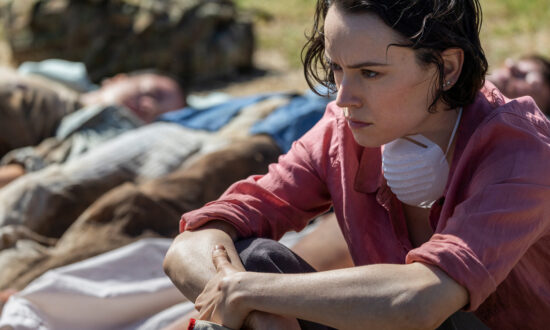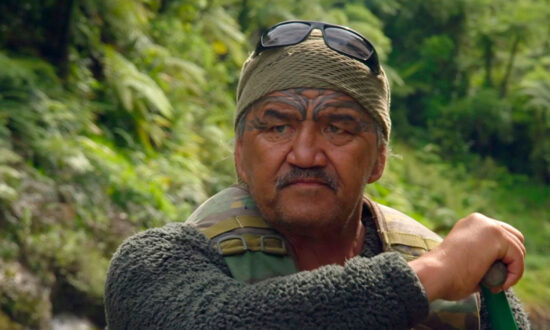Few Australian films have been more misrepresented by critics than Wake in Fright.
The 1971 movie was the first masterpiece of the revived Australian film industry – directed by a Canadian, from a script by a Jamaican, with a Norwegian producer and finance from an American fridge manufacturer. It was based on a novel by Lakemba boy and part-time butterfly farm operator Kenneth Cook.
Umbrella Entertainment has announced a 4K restoration of the pioneering Australian New Wave movie. Scanned from the original camera negative then colour-corrected and stabilised one shot at a time, this new restoration has undergone months of work to clean all imperfections and distortion.
Umbrella’s restoration also marks the most recent entry into the muddied and strange history of this film. It has been called “a horror movie”, “probably the most unflattering depiction” of Australia “that has ever been filmed”, about a “descent into madness” and “unthinking savagery”, set in “a living hell” full of “sinister” characters.
Well, yes. But also, no.
Because Wake in Fright is not a horror film. It’s a gritty drama, I guess, about a school teacher, John Grant, assigned to work in a two-bit town in the Outback. He’s headed to Sydney on holiday when he loses all his money gambling, gets invited to dinner, goes out ‘roo shooting and enjoys it but also doesn’t. He stays with an alcoholic doctor, “Doc” Tydon, who, it’s implied, sexually assaults him. Grant has a nervous breakdown, tries to kill himself with a rifle, misses, then winds up back in his two-bit country town.
That doesn’t sound like much in synopsis form, but the brilliance of the novel (and film) lies in its evocation of outback life – the heat, flies, beer, cigarettes, two-up games, poker machines, red dirt, yellows, browns – and the people who live there – alcoholic, macho, lonely, boorish, bored, funny, friendly. Yes, friendly.
The thing often not appreciated about Wake in Fright is that most of the people Grant encounters are trying to be nice. They invite him to sing-alongs, shout him drinks when he’s broke, ask him over for dinner and to go ‘roo shooting, offer him sex, gifts, accommodation and free rides.
The only real predator is Doc, played by Donald Pleasance. I know viewers get upset by the drinking, shooting, gambling and fighting, but people did (and do) genuinely enjoy those things, along with the freedom and camaraderie of outback life. They don’t think they’re in hell.
Gary Bond, the actor who plays Grant in the film, was English, which suits the story perfectly since Grant basically acts like a self-important low-grade colonial official stuck out in a far-flung corner of the Empire.
He looks down on the natives as uncultured peasants, and maybe they are, but Grant’s the one who decides to play two-up, then to keep playing it. He’s the one who almost gets run over by a car because he’s daydreaming, then gets drunk instead of looking for work, who can’t get it up for a lonely woman, who agrees to go shooting and doesn’t seem to realise you can order a soft drink in a pub.
This snobbish Baby Boomer is too good for the people he encounters or things they do but he doesn’t have the courage of his prejudices to avoid them. He can’t hold his booze, kill a kangaroo, get an erection, or say “no”. He can’t even kill himself properly, or ask a clear question about what direction a truck is headed in.
But look, I also get it. I went to an all-boys’ GPS school, so I understand wanting to fit in among people you don’t necessarily like or even respect. The novel and film are done with tremendous empathy and accuracy, which is the source of its power: it’s so identifiable and recognisable and true, and that makes it uneasy to watch.
There was movie interest in Cook’s novel almost immediately following its publication in 1961. I think it fitted in with British New Wave cinema of the time, with its verisimilitude, sexual frankness, toxic masculinity and class consciousness.
Also, the book is short and brilliantly written – you can “see” a film as you read it.
Morris West tried to get a big-screen version going, then Dirk Bogarde and Joseph Losey, before the money was raised by an Australian-American combination that included Bobby Limb. They were smart and lucky enough to hire as director Ted Kotcheff, who was Canadian, so he got it. (Canadians are basically Australians with snow and French). He had worked in Britain, was smart enough to respect the text. He had made a few features and so could handle a big production.
On release, Wake in Fright flopped at the box office everywhere, except a cinema in Paris. In hindsight, it’s not hard to see why – the film doesn’t fit into any sort of easy-to-define genre and the public doesn’t generally go to serious stories about drunken louts unless you add gangsters and/or murder. Also, there was no big name to draw the art house crowd (the Losey-Bogarde version couldn’t have been any better, but it might’ve made more money due to their fame).

Get InReview in your inbox – free each Saturday. Local arts and culture – covered.
Thanks for signing up to the InReview newsletter.
In hindsight, though, the star power is obvious including Pleasance and Aussie icons Chips Rafferty and John Meillon,
However, eventually Wake in Fight became a genuine cult favourite with passionate devotees including TV presenter Bill Collins (a former school teacher), Nick Cave (a former boarder at Caulfield Grammar) and Martin Scorsese (who went on to make a series of films about toxic male boors plus After Hours, which is clearly influenced structurally by Wake in Fright.)
The movie also has a surprising (to me, anyway) number of female fans – maybe they enjoy seeing men behaving badly in a way that’s so unglamorous.
Like I say, I think Wake in Fright is a masterpiece that’s been mispresented, but the great thing about masterpieces is you can have different opinions on them. See the movie for yourself. You won’t regret it.
Umbrella Entertainment’s new 4K restoration of Wake in Fright premieres at the Melbourne International Film Festival in August and will be released for home entertainment later in 2024.
umbrellaent.com.au
Support local arts journalism
Your support will help us continue the important work of InReview in publishing free professional journalism that celebrates, interrogates and amplifies arts and culture in South Australia.
Donate Here




